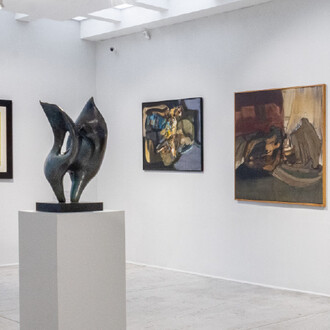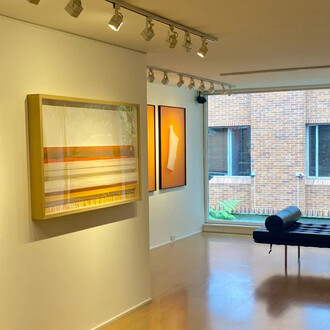The National Museum of Colombia presents Intimate Voices, an exhibition of selected works by women artists featuring elements that call to mind intimacy and shed light on the historical and social contexts in which the works were created.
The exhibition, containing works by 18 artists from the late nineteenth until the early twenty-first century, is divided into five sections: "House", "Dairies", "Body", "Desire", and "Silence".
From Margarita HolguÍn y Caro's La costurera (The Seamstress), recalling traditional chores of nineteenth-century women, to Feliza Bursztyn's provocative Cama (Bed) or Ethel Gilmour's La última carta a Dios (Last Letter to God), reflecting the raw violence of the eighties, this section illustrates the transformation of the domestic space over the past two centuries. The grouping includes works by Teresa Cuervo Borda, Beatriz Daza, Beatriz Gonzalez, and Ida Esbra.
In the second section, visitors will find works related to the body and the way society and several women artists have viewed it in recent decades. Hena Rodríguez, Karen Lamassonne, Mariana Varela, and Maria Teresa Hincapié address issues such as the impact of media and advertising on the imagery of the female body, the emergence of feminist movements, reflections on gender and rights, and the spiritual dimension of the body.
The attempt to preserve the present for posterity led two artists to produce the diaries on display in this section. Soledad Acosta began her manuscript in 1853 and, nearly 150 years later, in 2002, Ana Salas began a video diary. Although both pieces touch on primarily intimate aspects, Acosta's diary in particular highlights the political situation at the time and certain literary aspects suggest that her diary was part of the training she underwent in becoming a professional writer.
In this section, desire is approached, in the words of curator Marta Rodríguez, from the perspective of "our innermost corner of intimacy". In works such as Débora Arango's La fuga del convento (Escape from the Convent); Beatriz Eugenia Díaz's celoSie (Latticework); and Adriana Marmorek's Desborda (Overflowing), we sense the tension between the mystical life, characterized by a fear of the body imposed by the Catholic religion, and the erotic sexual and voyeuristic experience.
One final independent section features eleven terracotta figures created by Freda Sargent. According to the curator of the exhibition, these female figures go beyond representation of the body; their self-absorbed expressions contain the momentum of romanticism, as well as poetic and symbolic elements inviting silent contemplation.
In addition to the exhibition, complementary educational and cultural programming will include lectures, special tours, and workshops.
Intimate Voices is an initiative of the National Museum of Colombia designed to share the legacy of these Colombian artists. The exhibition grew out of the traveling exhibition Women Between the Lines: A Story of Education, Art, and Gender, developed by the National Museum and curated by Carmen Maria Jaramillo. The traveling exhibition circulated in poster format throughout the country between 2015 and 2016. Intimate Voices is made possible by sponsors Banco Itau BBA and by support from the Association of Friends of the National Museum.













